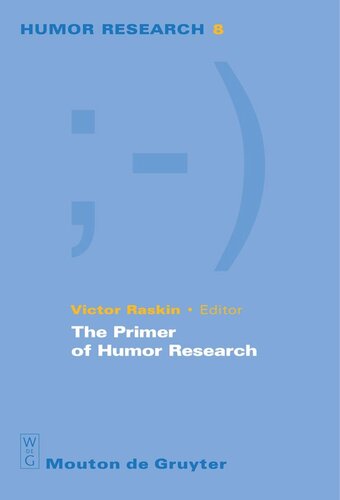

Most ebook files are in PDF format, so you can easily read them using various software such as Foxit Reader or directly on the Google Chrome browser.
Some ebook files are released by publishers in other formats such as .awz, .mobi, .epub, .fb2, etc. You may need to install specific software to read these formats on mobile/PC, such as Calibre.
Please read the tutorial at this link: https://ebookbell.com/faq
We offer FREE conversion to the popular formats you request; however, this may take some time. Therefore, right after payment, please email us, and we will try to provide the service as quickly as possible.
For some exceptional file formats or broken links (if any), please refrain from opening any disputes. Instead, email us first, and we will try to assist within a maximum of 6 hours.
EbookBell Team

4.3
38 reviewsThe book is intended to provide a definitive view of the field of humor research for both beginning and established scholars in a variety of fields who are developing an interest in humor and need to familiarize themselves with the available body of knowledge. Each chapter of the book is devoted to an important aspect of humor research or to a disciplinary approach to the field, and each is written by the leading expert or emerging scholar in that area.
There are two primary motivations for the book. The positive one is to collect and summarize the impressive body of knowledge accumulated in humor research in and around Humor: The International Journal of Humor Research. The negative motivation is to prevent the embarrassment to and from the "first-timers," often established experts in their own field, who venture into humor research without any notion that there already exists a body of knowledge they need to acquire before publishing anything on the subject-unless they are in the business of reinventing the wheel and have serious doubts about its being round!
The organization of the book reflects the main groups of scholars participating in the increasingly popular and high-powered humor research movement throughout the world, an 800 to 1,000-strong contingent, and growing. The chapters are organized along the same lines: History, Research Issues, Main Directions, Current Situation, Possible Future, Bibliography-and use the authors' definitive credentials not to promote an individual view, but rather to give the reader a good comprehensive and condensed view of the area.